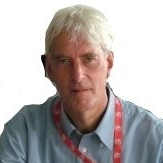Advances in Applied Thermodynamics
A special issue of Entropy (ISSN 1099-4300). This special issue belongs to the section "Thermodynamics".
Deadline for manuscript submissions: closed (28 February 2014) | Viewed by 112611
Special Issue Editor
Interests: thermal power systems; refrigeration; combined cycles; internal combustion engines; finite time thermodynamics
Special Issues, Collections and Topics in MDPI journals
Special Issue Information
Dear Colleagues,
The concept of entropy originated in the period when thermodynamics was concerned with the conditions under which heat can be converted to work. It was formalized and named (from the Greek εντροπία, transformation) by Rudolf Clausius from considerations of reversible processes. Usually today an irreversible transformation is identified by the Clausius Inequality. In his later work Clausius included irreversible process to derive the Second Law of Thermodynamics as an equality and included a term to account for entropy generation by dissipative processes. A more generalized formulation of the entropy concept, developed by Boltzmann, is associated with disorder or the destruction of the coherence of an initial state. This has been widely adopted in many diverse fields of study including chemistry, biology, cosmology and information science. An indication of the importance of the Second Law of Thermodynamics can be gauged by the following statement made by Sir Arthur Eddington "If someone points out to you that your pet theory of the universe is in disagreement with Maxwell's equations- then so much the worse for Maxwell's equations. If it is found to be contradicted by observation-well, these experimentalists do bungle things sometimes. But if your theory is found to be against the Second Law of Thermodynamics I can offer you no hope". The Second Law played a key role in the development of Classical Thermodynamics in the 20th century with entropy revealing some essential characteristics of the behavior of matter and energy. In moving away from equilibrium states and adopting mathematical techniques from other branches of science the analysis of Carnot has been extended to include thermodynamic systems with fixed rates or durations and constraints on heat or mass transfer surfaces. This exciting development has established the conditions appropriate to time or rate constrained processes and the conditions for optimal configurations of heat and mass exchange processes. It is clear that such techniques will play an important part in energy saving technologies that are so important today.
Prof. Dr. Brian Agnew
Guest Editor
Manuscript Submission Information
Manuscripts should be submitted online at www.mdpi.com by registering and logging in to this website. Once you are registered, click here to go to the submission form. Manuscripts can be submitted until the deadline. All submissions that pass pre-check are peer-reviewed. Accepted papers will be published continuously in the journal (as soon as accepted) and will be listed together on the special issue website. Research articles, review articles as well as short communications are invited. For planned papers, a title and short abstract (about 100 words) can be sent to the Editorial Office for announcement on this website.
Submitted manuscripts should not have been published previously, nor be under consideration for publication elsewhere (except conference proceedings papers). All manuscripts are thoroughly refereed through a single-blind peer-review process. A guide for authors and other relevant information for submission of manuscripts is available on the Instructions for Authors page. Entropy is an international peer-reviewed open access monthly journal published by MDPI.
Please visit the Instructions for Authors page before submitting a manuscript. The Article Processing Charge (APC) for publication in this open access journal is 2600 CHF (Swiss Francs). Submitted papers should be well formatted and use good English. Authors may use MDPI's English editing service prior to publication or during author revisions.
Keywords
- finite time thermodynamics
- entropy generation minimization
- optimization
- thermodynamic systems
Related Special Issue
- Advances in Applied Thermodynamics III in Entropy (5 articles)






